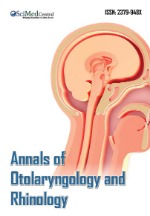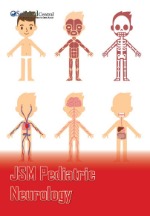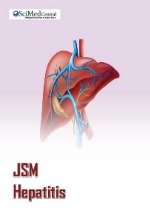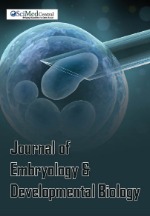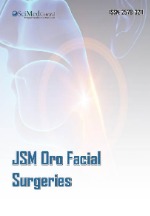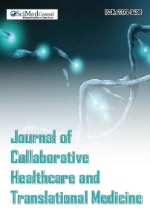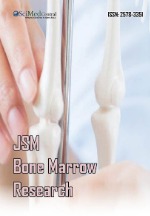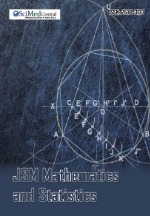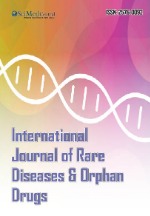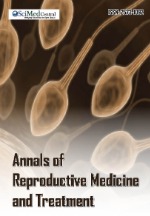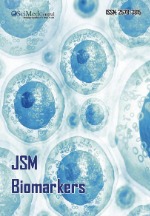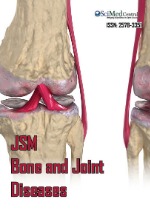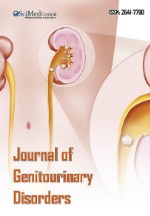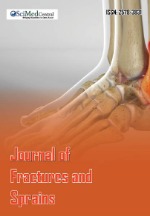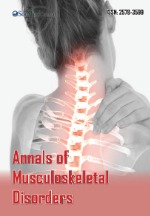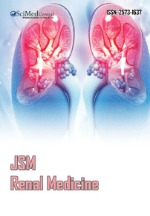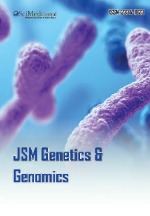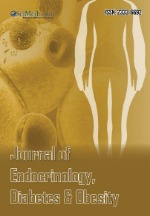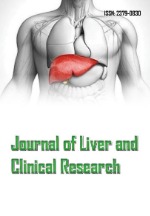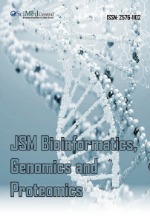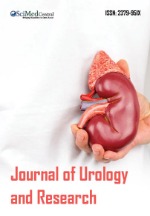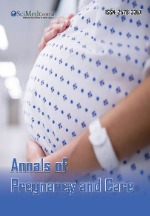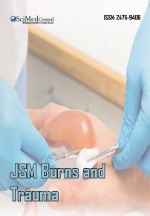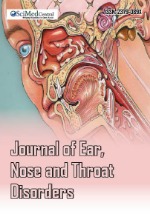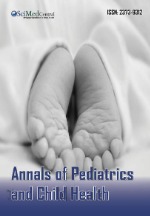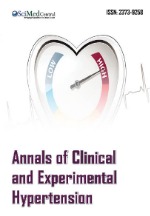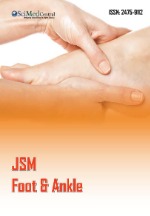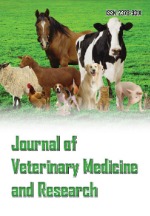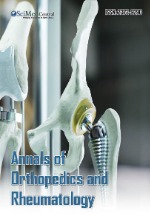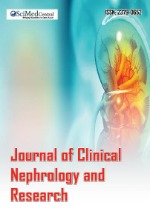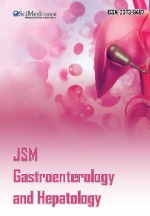Validity of Dietary Patterns Extracted from the Food Intake Frequency Questionnaires of Japanese Pregnant Women
- 1. Department of Food Science, Otsuma Women’s University, Japan
- 2. Center for Maternal-Fetal, Neonatal and Reproductive Medicine, National Center for Child Health and Development, Japan
- 3. Department of Social Medicine, National Research Institute for Child Health and Development, National Center for Child Health and Development, Japan
- 4. Department of Obstetrics and Gynecology, Saitama Medical University, Japan
- 5. Department of Global Health Promotion, Tokyo Medical and Dental University, Japan
Abstract
Introduction: Dietary habits during pregnancy affect several pregnancy outcomes. Despite the recent attention on dietary assessments, such as dietary quality and dietary pattern extraction, studies on the validity of dietary patterns in pregnant women are few. In this study, we examined the food intake of pregnant women using a food frequency questionnaire (FFQ) and dietary records (DR) to identify and assess the validity of their dietary patterns.
Methods: A total of 194 women, 8–15 weeks pregnant, who visited the National Center for Child Health and Development from January to December 2011 participated. Principal component analyses were performed on 27 food groups obtained from the FFQ and DR. Spearman correlation coefficients were calculated to investigate the validity of dietary patterns extracted from the FFQ and DR. Additionally, tertiles were cross-tabulated based on the principal component scores of the dietary patterns, and category concordance rates were calculated.
Results: The first dietary pattern extracted from the FFQs was named the “balanced type,” and the second was named “fruit-intake type”. In particular, the “balanced type” dietary pattern showed correlation coefficients similar to those of previous studies, indicating good validity. As for category concordance, the number of women classified into the same category for the first and second dietary pattern was 92 (47.4%) and 77 (39.7%), respectively.
Conclusion: This study suggested the usefulness of the FFQ in extracting dietary patterns. Thus, clarifying the relationships between the diet and health status of pregnant women and birth outcomes.
Keywords
• Dietary patterns
• Pregnancy
• Food intake
• Validity
Citation
Doi R, Kobayashi M, Ogawa K, Morisaki N, Jwa CS, et al. (2021) Validity of Dietary Patterns Extracted from the Food Intake Frequency Questionnaires of Japanese Pregnant Women. J Hum Nutr Food Sci 9(1): 1140.
ABBREVIATIONS
FFQ: Food Frequency Questionnaire; DR: Dietary Record
INTRODUCTION
Dietary habits during pregnancy affect several pregnancy outcomes. As such, nutritional intake during pregnancy is considered to play an important role in the health of children [1]. For instance, lower birth weight, an indicator of fetal development, has been suggested to increase the risk of diabetes and coronary artery disease in later life [2-4]. As maternal diet during pregnancy affects fetal growth, maintaining an appropriate diet during pregnancy is crucial. However, a report on the dietary habits of mid-pregnant Japanese women stated that their energy intake was approximately only 1,600 kcal, which is significantly below the recommended level [5,6]. Similarly, folic acid intake, which is particularly important in the first trimester, was found to be less than 80% of the recommended level [5]. Furthermore, surveys conducted in pregnant and lactating women reported that >85% of them consumed calcium and dietary fiber at levels below the nutritional requirements and targets [7]. According to the Ministry of Health, Labor and Welfare’s guideline on the eating habits of pregnant women, it is desirable to practice not only the intake of nutrients and foods that tend to be deficient, but also consider a balanced diet [8].
Dietary assessments have been conducted in pregnant mothers for single foods and nutrient intake [9,10], and the association between nutrient intake and fetal development has been investigated [5-7]. However, as our daily diets are composed of food containing various nutrients, dietary assessments, such as dietary quality and dietary pattern extraction, have attracted attention in recent years [11-13]. In studies regarding pregnant Japanese women, a study examining the association between dietary patterns during pregnancy and birth outcomes reported that dietary patterns characterized by high intake of bread, confectionery, and soft drinks, and low intake of fish and vegetables increased the risk of infants that are small for gestational age [14]. Moreover, studies in other countries have also reported that maternal dietary patterns during pregnancy affect fetal development [15-17].
Since it is also important to determine the extent to which dietary patterns can estimate true dietary intakes, several reports have examined the validity of dietary patterns. While several studies have been conducted to explore the validity of dietary patterns in middle-aged and older adults [18-21], to the best of our knowledge, only one study has been conducted in pregnant women [22]. According to their report, two dietary patterns were extracted and validated from food frequency questionnaires (FFQ), and dietary records (DR) of pregnant women in the first trimester [22]. However, none have examined the validity of the dietary patterns of Japanese pregnant women; thus, we conducted a validation study on pregnant Japanese women.
MATERIALS AND METHODS
Subjects
The survey was conducted between January and December 2011. The FFQ and the three-day DR were completed by 200 consenting women at a gestational age of 8–15 weeks who visited the National Center for Child Health and Development (NCCHD) in Tokyo. Of the 200 women who responded, six women with severe hyperemesis gravidarum who responded “unable to eat” in the questionnaire on morning sickness were excluded. Thus, a total of 194 participants were included in the analysis. The ethical considerations of this study were approved by the Ethics Review Board of the National Center for Child Health and Development (No. 461).
Dietary survey
Semi-quantitative food frequency survey: Daily intake was calculated using the semi-quantitative FFQ for epidemiological surveys. The subjects were asked to respond to questions pertaining to their diet over the past two months. The FFQ consisted of questions on the frequency of intake of 165 foods, along with 29 additional questions. The following were the nine options that described the frequency of food intake: 1) less than once a month, 2) one-to-three times a month, 3) once to twice a week, 4) three-to-four times a week, 5) five-to-six times a week, 6) once a day, 7) two-to-three times a day, 8) four-to-six times a day, and 9) seven or more times a day. Regarding the intake of each food per serving, the respondents were instructed to choose from the following three options with respect to the indicated reference intake: 1) low or less than half, 2) the same, and 3) high or more than 1.5 times. Using the standard tables of food composition in Japan in 2010, weighted average food composition tables were prepared for each food item, and the daily energy and nutrient intake and food group intakes were calculated based on the responses of the subjects. The external validity of the FFQ used in Japanese pregnant and nursing women has been verified [23].
Dietary record: DR was conducted for three days. The subjects were asked to provide details and times of all meals in the questionnaire. The details of the meals were described by measuring the weights of the food as much as possible. When the subjects were unable to weigh the food, they were instructed to describe it in terms of the reference quantities (one apple, one spoon, one cup, etc.). The survey was conducted over two weekdays and one weekend. The collected questionnaires were checked by trained nutritionists. The reference quantities were revised, and omissions were added with reference to the 2007 National Health and Nutrition Examination Food Number Table [24]. Based on the three-day DR data, the average daily intake by food groups was calculated using the standard tables of food composition in Japan published in 2010.
Definition of dietary patterns
The 167 food and beverage items described in the FFQ were classified based on the similarities between the nutritional components and the use of the dish. The list of food items was divided into 27 food groups, referring to Japanese studies on dietary pattern extraction [25,26] and validity of the dietary pattern [21] (Table 1).
|
Table 1: Twenty-seven food groups used in this study to analyze dietary patterns |
|
|
Rice |
Rice |
|
Bread |
Bread |
|
Noodles |
Udon noodles, soba noodles, ramen noodles, spaghetti, somen noodles |
|
Tubers |
Sweet potatoes, taro, potatoes, yams, konjac |
|
Sugar and sweet taste |
Jam, coffee sugar, tea sugar |
|
Beans |
Yudofu (boiled tofu), koya-dofu (freeze-dried tofu), nama-age (thick deep-fried tofu), abura-age (thin deep-fried tofu), natto (fermented soybeans), and miso (bean paste) |
|
Seed |
Sesame, peanut |
|
Vegetables |
Carrot, spinach, pumpkin, cabbage, cabbage, daikon radish, tomato, long onion, green onion, arlic chives, chrysanthemum, |
|
komatsuna (Japanese mustard spinach), broccoli, onion, cucumber, eggplant, Chinese cabbage, burdock, bean sprouts, sandpea, lettuce, asparagus, garlic |
|
|
Pickled vegetables |
Pickled takuan, pickled green leaves, pickled plum, pickled Chinese cabbage, pickled cucumber, pickled eggplant, pickled turnip |
|
Fruit |
Orange, citrus fruit, apple, persimmon, strawberry, grape, melon, watermelon, peach, pear, kiwi, pineapple, banana |
|
Mushroom |
Shiitake, enoki, shimeji |
|
Seaweed |
Wakame, hijiki, nori |
|
Fatty seafood |
Yellowtail, sea bream, horse mackerel, saury, eel |
|
Other seafood |
Slightly salted pacific cod, dried seafood, salmon, skipjack, pacific cod, white bait, cod roe, squid, octopus, shrimp, clams |
|
Processed seafood products |
Canned tuna, chikuwa, kamaboko, satsuma-age (fried fishcake) |
|
Lean meat |
Beef, pork, and ground meat |
|
Chicken |
Chicken and liver |
|
Processed meat |
Loin ham, sausage, bacon |
|
Egg |
Egg |
|
Dairy products |
Low-fat milk, regular milk, cheese, yogurt, Yakult, coffee milk, black tea milk |
|
Oils and fats |
Cooking oil, butter, margarine |
|
Confectionery |
Japanese sweets, cakes, biscuits, puddings, jellies, chocolates, ice cream, snacks, rice crackers, sweets |
|
Alcohol |
Sake, shochu, beer, whiskey, wine, cocktail |
|
Tea |
Japanese tea leaves, canned Japanese tea, oolong leaves, canned oolong tea, canned black tea |
|
Vegetable juice |
Tomato juice, vegetable juice |
|
Fruit juice |
Orange juice, apple juice, grapefruit juice, fruit juice |
|
Juice |
Carbonated beverages |
Similarly, food listed in the DRs was classified into 27 food groups. Principal component analyses of the 27 food groups obtained from the FFQs and DRs were performed. The eigenvalues were ≥1, dietary patterns that could be interpreted were identified, and principal component loading, and principal component scores were obtained according to the dietary patterns.
Dietary patterns extracted by principal component analysis are the principal components obtained from the intake of multiple foods. The principal component loading shows correlation coefficients with variables for both principal components. The principal component scores also represent individual scores for each principal component calculated from the principal component loading and individual food intake. The higher the principal component score, the higher the weight of the principal component. The names of the two dietary patterns extracted from the above were determined according to the food group showing a high principal component load.
Statistical Analysis
To investigate the validity of the dietary patterns, Spearman correlation coefficients were calculated between the principal component scores of dietary patterns extracted from the FFQs and DRs. Additionally, we cross-tabulated the tertiles based on the principal component scores of the dietary patterns extracted from the FFQs and those based on the principal component scores of the dietary patterns extracted from the DRs and calculated the category concordance rates. Statistical analysis was performed using SPSS for Windows version 27.0.
RESULTS
Characteristics of the subjects
Table 2 presents the characteristics of the participants. The mean age was 35.3 ± 4.0 years, pre-pregnancy weight was 51.0±6.4 kg, and pre-pregnancy BMI was 20.2±2.3 kg/m².
|
Table 2: Basic characteristics of the subjects. |
||
|
|
Average |
Standard deviation |
|
Age (years) |
35.3 |
4.0 |
|
Pre-pregnancy BMI (kg/m²) |
20.2 |
2.3 |
|
Pre-pregnancy height (cm) |
158.9 |
5.3 |
|
Pre-pregnancy weight (kg) |
51.0 |
6.4 |
|
Body weight gain (kg) during pregnancy |
10.1 |
0.9 |
|
Gestational age at birth (weeks) |
39.2 |
1.4 |
|
Birth weight (g) |
2997.7 |
410.7 |
|
|
N |
% |
|
Number of births |
|
|
|
Primapara |
128 |
66.0 |
|
Multipara |
66 |
34.0 |
|
Smoking habits |
|
|
|
Non-smoker |
180 |
92.8 |
|
Previous smoker |
11 |
5.7 |
|
Smoker |
1 |
0.5 |
|
No answer |
2 |
1.0 |
|
Drinking habits |
|
|
|
Yes |
7 |
3.6 |
|
None |
185 |
95.4 |
|
No answer |
2 |
1.0 |
|
Household Annual Income |
|
|
|
Less than 4 million yen |
13 |
6.7 |
|
4 million yen to less than 8 million yen |
59 |
30.4 |
|
8 million yen or more |
118 |
60.8 |
|
No answer |
4 |
2.1 |
|
Educational attainment |
|
|
|
Graduated from a four-year university or graduate school |
125 |
64.4 |
|
BMI, body mass index |
||
The gestational age at birth was 39.2 ± 1.4 weeks, and the birth weight was 2,997.7±410.7g. There were 128 (66.0%) primiparous women. In terms of smoking and drinking habits, a majority of the respondents were non-smokers (n=180, 92.8%), and do not drink (n=185, 95.4%). For 118 women (60.8%), the household’s annual income was 8 million yen or more. In terms of highest educational attainment, 125 respondents (64.4%) were 4-year university and graduate school graduates.
Dietary pattern
Table 3 shows the principal component loadings of the two dietary patterns.
|
Table 3: Principal component loading by dietary pattern in principal component analysis. |
||||
|
|
First pattern† |
Second pattern§ |
||
|
|
FFQ |
DR |
FFQ |
DR |
|
Rice |
0.20 |
0.44 |
-0.30 |
-0.18 |
|
Bread |
0.39 |
- |
0.38 |
- |
|
Noodles |
0.40 |
0.13 |
0.17 |
- |
|
Tuber |
0.60 |
0.45 |
- |
- |
|
Sugar and sweet taste |
0.35 |
0.36 |
0.28 |
-0.22 |
|
Beans |
0.47 |
0.49 |
- |
- |
|
Seed |
0.38 |
0.39 |
- |
- |
|
Vegetables |
0.74 |
0.67 |
- |
- |
|
Pickled vegetables |
0.35 |
0.45 |
0.19 |
- |
|
Fruit |
0.25 |
0.26 |
0.37 |
0.69 |
|
Mushroom |
0.63 |
0.49 |
- |
- |
|
Seaweed |
0.61 |
0.37 |
- |
0.15 |
|
Fatty seafood |
0.50 |
0.31 |
- |
-0.16 |
|
Other seafood |
0.57 |
0.33 |
-0.17 |
-0.13 |
|
Processed seafood products |
0.49 |
0.12 |
-0.28 |
- |
|
Lean meat |
0.59 |
0.46 |
-0.28 |
- |
|
Chicken |
0.51 |
0.14 |
-0.44 |
-0.21 |
|
Processed meat |
0.51 |
0.16 |
-0.25 |
- |
|
Egg |
0.43 |
0.38 |
-0.21 |
-0.24 |
|
Dairy products |
0.30 |
0.15 |
0.19 |
- |
|
Oils and fats |
0.66 |
0.44 |
- |
- |
|
Confectionery |
0.43 |
0.12 |
0.46 |
0.12 |
|
Alcohol |
? |
0.50 |
0.17 |
- |
|
Tea |
0.35 |
0.20 |
- |
-0.12 |
|
Vegetable juice |
0.16 |
0.21 |
0.21 |
0.26 |
|
Fruit juice |
- |
- |
0.49 |
0.90 |
|
Juice |
- |
- |
0.38 |
0.84 |
|
Contribution (%) |
20.1 |
11.9 |
6.4 |
8.7 |
|
?(Dash): Principal component loading <±0.15 |
|
|
||
|
†;"balanced type" |
|
|
|
|
|
§;"fruit-intake type" |
|
|
|
|
The first dietary pattern extracted from the FFQs was named the “balanced type” due to the high load of principal components such as bread, noodles, potatoes, sugar/ sweet-tasting items, beans, seeds, vegetables, mushrooms, seaweeds, fatty seafood, other seafood, lean meat, chicken meat, and eggs. Similarly, the first dietary pattern extracted from the DRs also showed high principal component loadings of potato, beans, seeds, vegetables, mushrooms, seaweed, fatty seafood, other seafood, lean meat, and eggs. This was identical to the first dietary pattern extracted from FFQs.
Subsequently, the second dietary pattern extracted from the FFQ was named “fruit-intake type” due to the high principal component loadings of bread, fruit, fruit juice, and juice. The second dietary pattern extracted from the DRs also showed high principal component loadings of fruit, fruit juice, and juice, which is similar to the second dietary pattern extracted from the FFQs.
The contributions of dietary patterns identified from the FFQs were 20.1% in the first pattern and 6.4% in the second pattern. The contributions of dietary patterns identified from the DRs were 11.9% in the first pattern and 8.7% in the second pattern. The third and subsequent dietary patterns were excluded from further analysis because their contributions were small, and the principal component loadings were inconsistent between the FFQs and DRs.
Table 4 shows the Spearman correlation coefficients of the principal component scores of the first and second dietary patterns extracted from the FFQs and DRs.
|
Table 4: Correlation coefficients for the dietary patterns. |
|
|
|
DR‡ vs FFQ* |
|
|
R |
|
First pattern† |
0.322** |
|
Second pattern§ |
0.280** |
|
Spearman rank correlation coefficient**p<0.01 |
|
|
†;"balanced type" |
|
|
§;"fruit-intake type" |
|
|
‡;Dietary records |
|
|
* ;Food frequency questionnaire |
|
The Spearman correlation coefficients of the principal component scores of the first and second dietary patterns extracted from the FFQs and DRs were 0.322 and 0.280 (p<0.01), respectively. Table 5-1 shows the results of cross-tabulation between the tertiles based on the principal component scores of dietary patterns extracted from the FFQs and the DRs.
|
Table 5-1: Cross-tabulation of three categories of food consumption per day, categorized by DR and FFQs. |
|||||
|
(First pattern†) |
|
FFQ* |
|
||
|
DR‡ |
|
1 (Low) |
2 (Medium) |
3 (High) |
Grand total |
|
1 (Low) |
33 |
20 |
12 |
65 |
|
|
2 (Medium) |
22 |
24 |
18 |
64 |
|
|
3 (High) |
10 |
20 |
35 |
65 |
|
|
|
Grand total |
65 |
64 |
65 |
194 |
|
(Second pattern§) |
|
FFQ* |
|
||
|
DR‡ |
|
1 (Small) |
2 (Medium) |
3 (Large) |
Grand total |
|
1 (Low) |
28 |
24 |
13 |
65 |
|
|
2 (Medium) |
23 |
19 |
22 |
64 |
|
|
3 (High) |
14 |
21 |
30 |
65 |
|
|
|
Grand total |
65 |
64 |
65 |
194 |
Category concordance is shown in Table 5-2. In the first dietary pattern, 92 women (47.4%) were classified into the same category, and 80 women (41.2%) were classified into adjacent categories. In the second dietary pattern, 77 women (39.7%) were classified into the same category, and 90 women (46.4%) were classified into adjacent categories.
|
Table 5-2: Category Concordance Rate. |
||
|
(First pattern†) |
Number of people |
% |
|
Same category |
92 |
47.4 |
|
Adjacent categories |
80 |
41.2 |
|
Two adjacent categories |
22 |
11.3 |
|
Total |
194 |
100.0 |
|
(Second pattern§) |
Number of people |
% |
|
Same category |
77 |
39.7 |
|
Adjacent categories |
90 |
46.4 |
|
Two adjacent categories |
27 |
13.9 |
|
Total |
194 |
100.0 |
|
†;"balanced type" |
|
|
|
§;"fruit-intake type" |
|
|
|
‡;Dietary records |
|
|
|
* ;Food frequency questionnaire |
|
|
DISCUSSION
In this study, we used principal component analysis to extract the dietary patterns of women in the early stages of pregnancy. As a result, two main dietary patterns were identified. The first dietary pattern was named as the “balanced type” as it was characterized by a high load of main components such as noodles, potatoes, vegetables, seafood, and meat. On the other hand, the second dietary pattern was named the “fruit-intake type” due to the high principal component loadings of fruit and fruit juices. The “balanced” dietary pattern, the first dietary pattern in this study, has been reported in studies of dietary pattern extraction in pregnant Japanese women and has been named the “rice, vegetables, fish type” or “Japanese type” because it comprises a high intake of vegetables, seaweeds, mushrooms, beans, potatoes, and seafood [14,27]. However, no dietary patterns similar to the second dietary pattern in this study have been reported previously. The sums of the contributions of “balanced type” and “fruit type” were 26.5% for the FFQs and 20.6% for the DRs. The contribution rates were not directly comparable between the constructed food groups; however, in a study by Okubo et al. [16], with 33 food groups, the sums of the contributions of the first and second dietary patterns were similar at approximately 20%.
Spearman correlation coefficients for the dietary patterns extracted from the FFQ and DR food group intake data were 0.322 (p<0.001) for the first dietary pattern and 0.280 (p<0.001) for the second dietary pattern. To date, two studies have been conducted on the validity of dietary patterns in Japanese individuals. According to Nanri et al. [20], the correlation coefficients between the dietary patterns were 0.32 to 0.49 for men and 0.36 to 0.63 for women. In contrast, Okubo et al. [21] reported coefficients of 0.56 to 0.62 for men and 0.36 to 0.57 for women. Furthermore, a study targeting pregnant women showed a correlation coefficient of 0.35 to 0.67 (p <0.001) [22]. In this study, the correlation coefficients of “balanced type,” the first dietary pattern extracted from the FFQs and DRs, were similar to those obtained in previous studies; however, the correlation coefficients of “fruit-intake type,” the second dietary pattern, were found to be lower than those of previous studies. The correlation coefficients were generally lower than those in the previous studies because the DR reflected the dietary condition after the pregnant women themselves became aware of the pregnancy as the record only covers 3 days after recruitment. However, the FFQ reflects the dietary intakes of the past two months, which may also reflect the dietary habits before pregnancy, and it is considered that Japanese diets are more diverse than those of other countries.
Cross-tabulation between the tertiles of the principal component scores of the dietary patterns classified from the FFQs and DRs revealed that the proportions of women classified into the same category and adjacent categories were 88.6% and 86.1% for the first and second dietary patterns, respectively. This method is frequently used to examine the validity of the FFQ. A validation study of a typical food frequency survey method or diet history method developed in Japan showed a concordance rate of 20%–30% for the same category alone and 50%–70% for the combined adjacent categories [28-30]. Since the values in this study fall within this range, the effect on ranking assessment in extracting dietary patterns using FFQs is considered to be small.
This study presented several limitations. First, the subjects in this study were relatively older and had relatively high household incomes [31,32]. As the participants of the current study may not necessarily reflect the general Japanese population, our results should be carefully interpreted. Moreover, it has been reported in a questionnaire survey that educational attainment and age are considered relevant factors [33] that may contribute to the accurateness of responses on the FFQ and DR. Second, dietary patterns extracted from the DRs are assumed to be the gold standard. DR is susceptible to recording and measurement errors due to potential changes in eating behavior [34]. Third, morning sickness has an effect. In this study, although those who were completely unable to eat due to morning sickness or were considered severe cases were excluded from the analysis, mild cases were included; therefore, the influence of morning sickness could not be fully considered. However, it has been reported that nausea during pregnancy did not have a significant effect as there was no difference between the DR and FFQ scores [22].
Based on the findings from this study, it was shown that the validity of the dietary pattern extracted from the FFQs slightly differed depending on the dietary pattern; however, it is necessary to carry out similar examinations in the second and third trimesters of pregnancy in the future in order to construct further evidence.
CONCLUSION
In the present study, dietary patterns were extracted by principal component analysis using the FFQ and DR data of women in the early stages of pregnancy. There was a correlation between the principal components scores of the dietary patterns obtained from the two datasets. In particular, the “balanced type,” the first dietary pattern, showed correlation coefficients similar to those of previous studies, indicating good validity. This is the first study to investigate the validity of dietary patterns in Japanese women. This study suggested the usefulness of the FFQ in extracting dietary patterns and clarifying the relationships between the diet and health status of pregnant women and the birth outcomes of their infants.
ACKNOWLEDGEMENTS
We thank the staff and participants for their important contributions. This study was supported by grants from the Japan Agency for Medical Research and Development [AMED-6013], the Research Development Grant for Child Health and Development from the National Center for Child Health and Development [25- 4], and the Grants-in-Aid for Scientific Research from Ministry of Health, Labor and Welfare [2017-2021]. The funders had no role in the study design, data collection and analysis, decision to publish, or preparation of the manuscript.
REFERENCES
2. Barker DJ. Fetal origins of coronary heart disease. BMJ. 1995; 311: 171-174.
7. Nakano T, K Ishii. Dietary Survey of Japanese Women during Pregnancy and Lactation. Jpn J Nutr Diet. 2004; 62: 103-110.
8. Ministry of Health, Labour and Welfare, Japan. Dietary habits of pregnant women before pregnancy, 2021.
24. The Japanese Society of Nutrition and Dietetics, Dietary Survey Manual: From the First Step to Practice and Application (in Japanese). 2016; Nanyodo.
31. Ministry of Health, Labour and Welfare, Japan, 2018 edition of the Annual Report on Health Labor and Welfare. 2017.
32. Ministry of Health, Labour and Welfare, Japan, Comprehensive Survey of Living Conditions 2019. 2019.
33. Miwa S. Dropouts and data adjustments on the NFRJ-08 Panel (in Japanese). Family Sociology Research. 2012; 1: 97-102.
34. Willett W, Nutritional Epidemiology (3rd edition). 2013.


